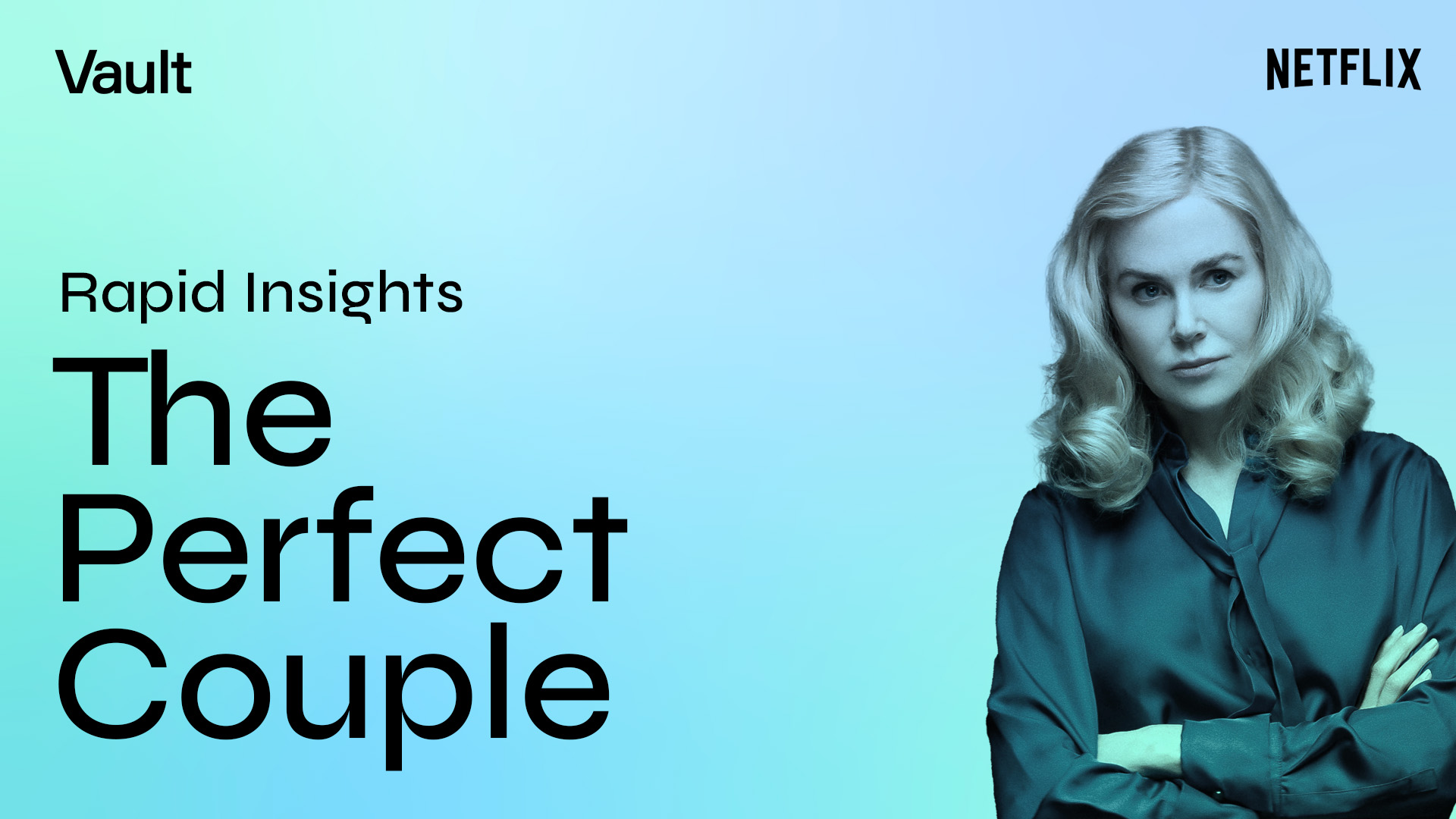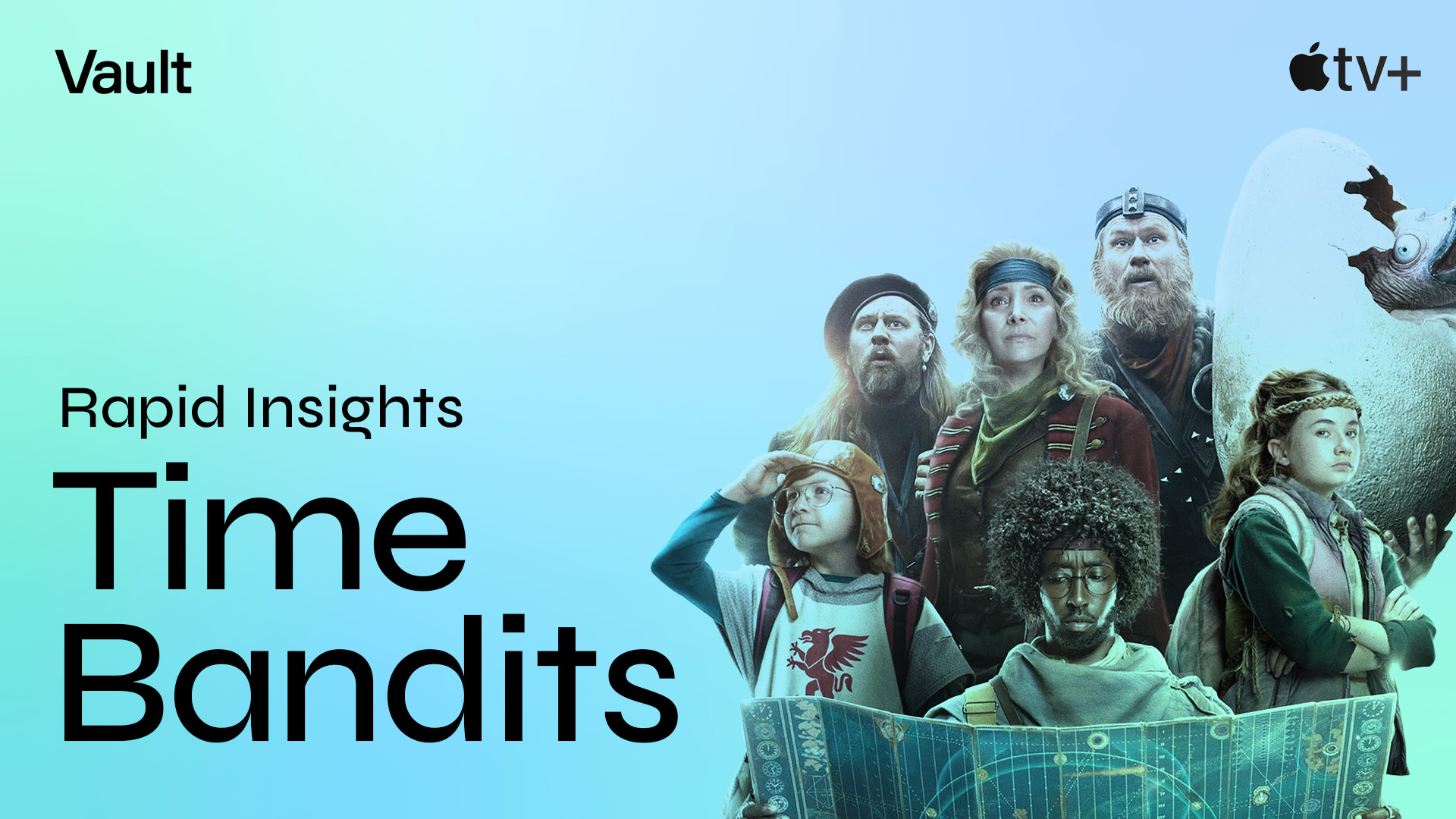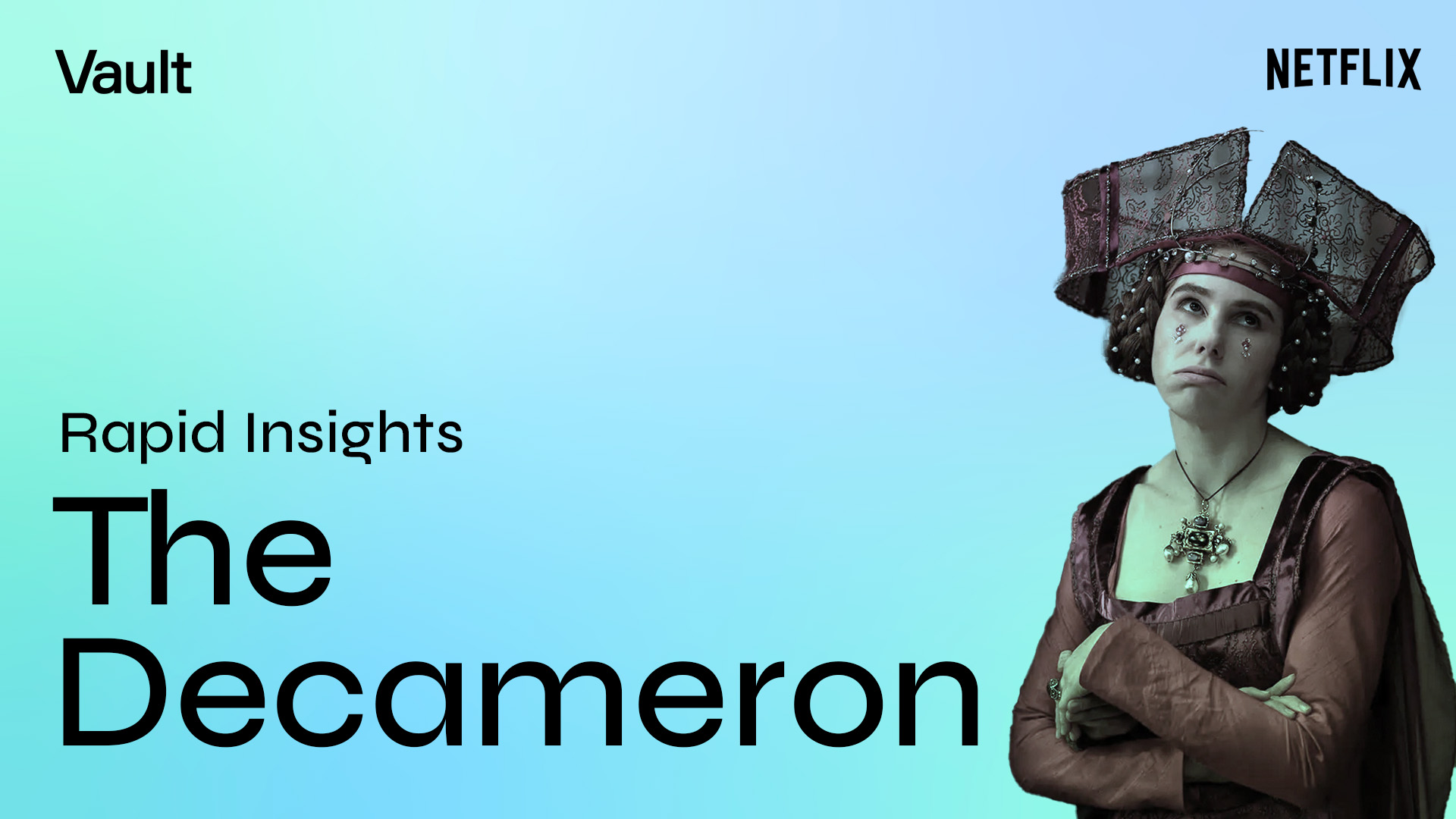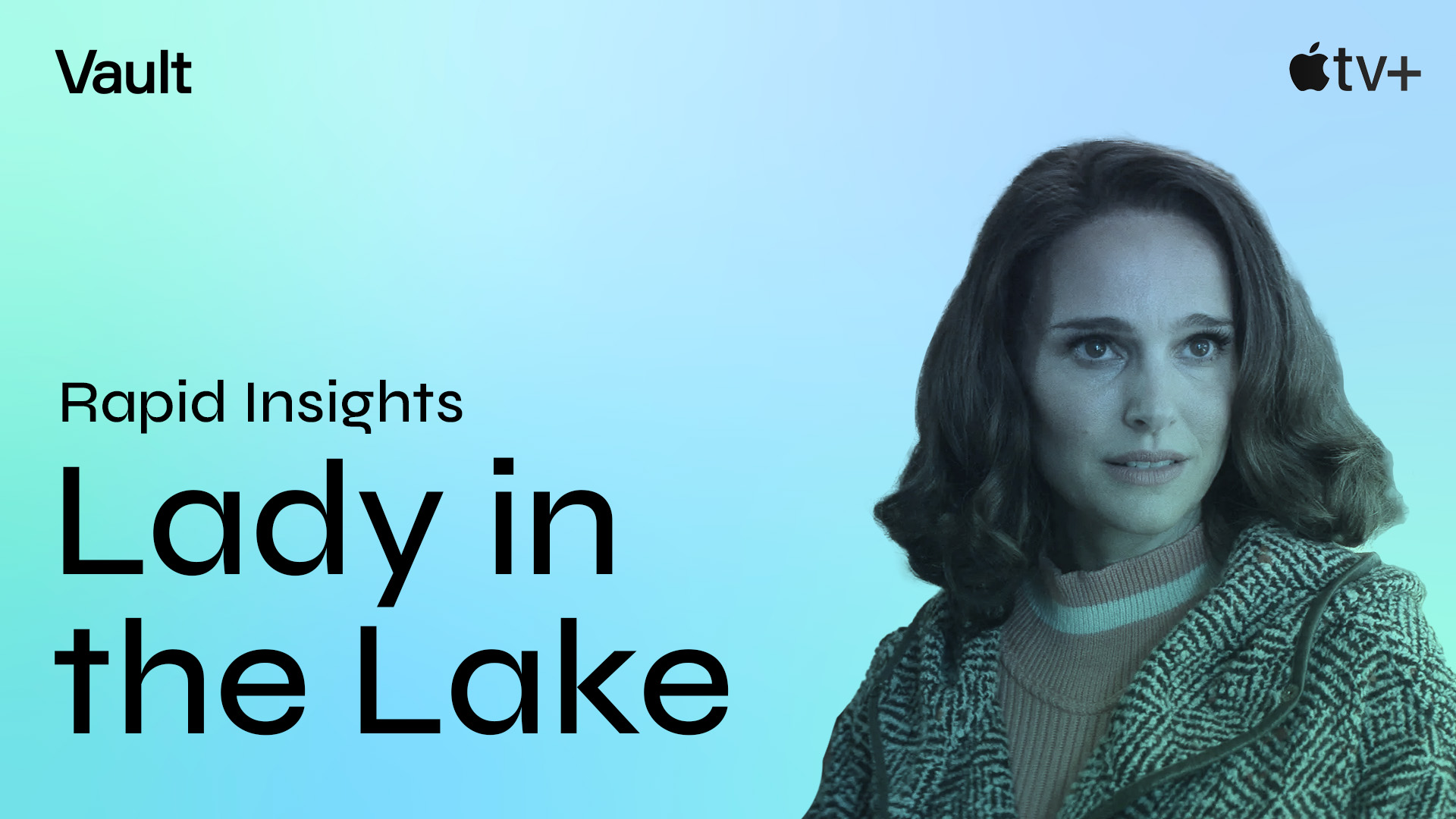On Thursday, Netflix is dropping a buzzy new limited series based on a popular whodunit novel about a shocking murder at a picture-perfect beach wedding weekend. This new crime drama stars Nicole Kidman as a wealthy matriarch unhappy with her son’s choice of bride; the loaded cast also includes Liev Schreiber, Dakota Fanning, Eve Hewson, and Meghann Fahy.
Here’s what you need to know about The Perfect Couple:
Vault uses index scores to describe the impact a given story/theme/element will have on specific KPIs:
≤79 Disappointing 80-89 Challenging 90-109 Average 110-119 Promising 120+ Outstanding
Will this show appeal to the same viewers as Kidman’s previous TV dramas?
Largely yes. For The Perfect Couple, we’re predicting a viewership that’s mostly women (68%) and heavily aged 30+ (77%)–the same audience sweet spot as Nine Perfect Strangers, Big Little Lies, The Undoing, and Expats. All of these twisted mysteries feature stacked ensemble casts, murky hidden secrets, and actress Kidman playing an enigmatic elite.
Why will audiences be adding The Perfect Couple to their queue?
For the wedding backdrop. The show opens as guests arrive for a picturesque beach wedding in Nantucket (Getting Married, 147), and the stress, clashes, and squabbles of such an emotionally-charged time (Emotions Running High, 132) provide the perfect set-up for homicide. Bride Amelia is marrying into the wealthy Winbury family over the objections of its imperious matriarch (Overcoming Adversity, 127) and her immature progeny (Arrested Development, 118), and the unfolding drama, capped off by a dead body on the sands, will prove irresistible to murder mystery aficionados.
How important is the show’s source material?
Very–and more so than usual. The fact that The Perfect Couple is Based on a Book (126) by bestselling author and “queen of the summer beach read” Elin Hilderbrand serves as an “outstanding”-level ratings draw, a feat that’s somewhat uncommon among serial adaptations. With Big Little Lies, for example, its novel ties do not appear at all among its top viewership drivers, and for Nine Perfect Strangers, its source material helps with social buzz but does not by itself pull in viewers. Shows whose literary origins do hold sway with ratings are often based on well-known properties like Bosch and The Lincoln Lawyer (both novel series from Michael Connelly) or Game of Thrones.
What will keep viewers glued to their seats?
Irresistible Family Secrets (129). As the show unfolds, the Family Dysfunction (141) and toxic dynamics (Family Relationships, 134) within the wealthy, powerful, and seemingly perfect Winbury clan become more and more apparent and dark revelations (Conspiracy and Cover Ups, 120) will ultimately come to light. Which of these all-American elites is the murderer? Audiences will want to stick around and find out.
How does the series’ social buzz look?
Promising. The show’s mid-July trailer drop saw a big two-day spike in online chatter, maxing out our social buzz meter (at 160) as consumers were eager to learn more. With the full episode release later this week, the buzz levels have again been climbing and will likely hit another peak once viewers start watching. Fans will primarily be posting and tweeting about the Winburys’ family secrets and dysfunctional relationships–the same elements that will drive its bingeability.
Redefine your understanding of TV subgenres
Introducing Genre DNA™ – TV subgenres redefined by groundbreaking AI analysis to reveal the true drivers of viewership.
See the insights that others can’t
Genre DNA™ goes beyond traditional TV genre classifications by analyzing over 1,000 scripted and unscripted series on both linear and SVOD platforms from the last 5 years.
Each Vault Genre DNA™ report offers a precise analysis of your chosen TV subgenre, uncovering its unique drivers of viewership.
*Publicly released trailers for series are evaluated using Vault’s algorithms – utilizing our proprietary 120K+ story element database alongside viewership performance and other datasets – to identify unique combinations of stories, themes, characters, and genre elements that will drive success.










